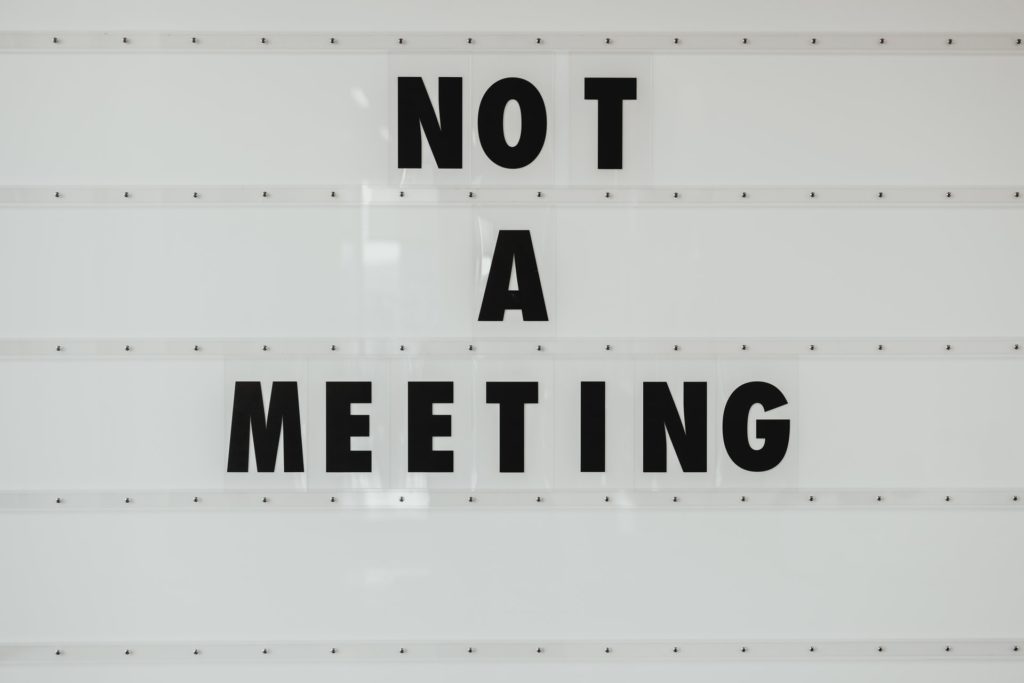Why do we have meetings?
Our computers and phones are loaded with dozens of communication apps.

I’m far from the first to ask this question. I believe it’s well-established that different modes of communication have different information bandwidth. More information is conveyed by a face-to-face conversation than an email, for example.
The conventional explanations for this are that A) text cannot convey tone, body language, or facial expressions; and B) people generally suck at writing.
But what if it’s less about how much information the speaker can convey, and more about how much the listener can receive? In other words, what if the bottleneck is not information bandwidth but rather attention bandwidth?
As of this writing, my email inbox contains 61 messages. (Down from 14,000 after a recent archiving spree.) My chat app has 36 channels open across 8 organizations. My podcasts app has 5.5 hours of content queued. And I won’t even try to count the hundreds of notifications across social media, YouTube, and the infinite doom-scroll of world news.
The only way to manage this information flood while retaining a semblance of sanity is to ration my attention. Email and chat, for example, get about 15 minutes every couple of hours. Social media gets a few minutes in the bathroom (which also sets an appropriate mental context).
So yes, that monthly all-hands meeting could be an email. That daily stand-up could be a chat message. But if it were, it would be competing with a hundred other attention-seeking missiles in the limited blocks of time I allocate to those channels. I would give it less attention, less time, less thought. I might ignore it completely.
I know I do better work when I can focus my full attention, uninterrupted, for several hours at a time. I expect this is true for most people, especially those doing any kind of creative work.
The purpose of a meeting, then, is not to convey information efficiently. It is to force an audience to pay exclusive attention to one thing, to get that creative focus pointed in a particular direction.
In the same physical space, our attention is constrained by social norms: It’s considered rude to look at your phone during a conversation or surf the web in a meeting. Remote-video meetings are challenging, in part, because the social norms of physical space conflict with the continuous partial attention habits of virtual space.
Regrettably, in many organizations, a meeting is the only way to obtain someone’s full attention, especially managers or people with responsibilities to multiple groups. I don’t have a prescription to fix that: It’s a deep problem in organizations of all types.
Hopefully, though, it helps just to acknowledge the problem. Ask yourself “Why have this meeting?” Acknowledge that the answer might be “To force people to listen to what I have to say.” But perhaps, in time, we can develop ways to ask others for their full attention — and give our full attention in return — without having to stake a claim to hour-long blocks of time.